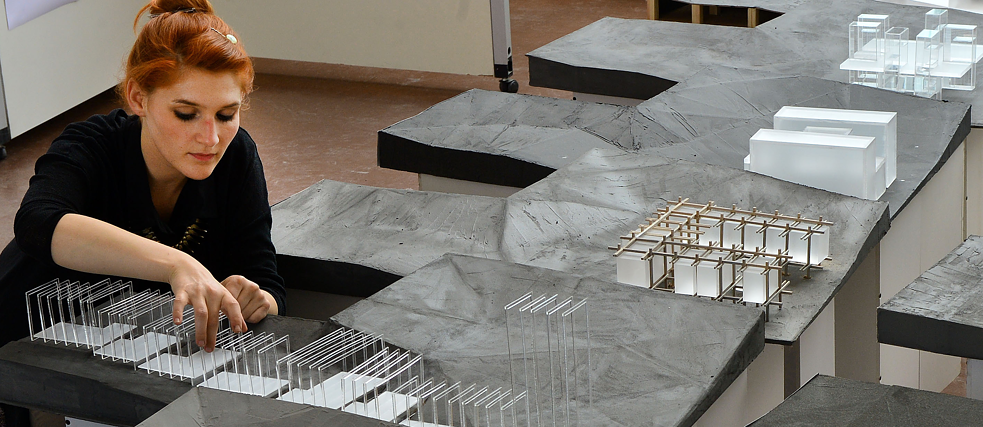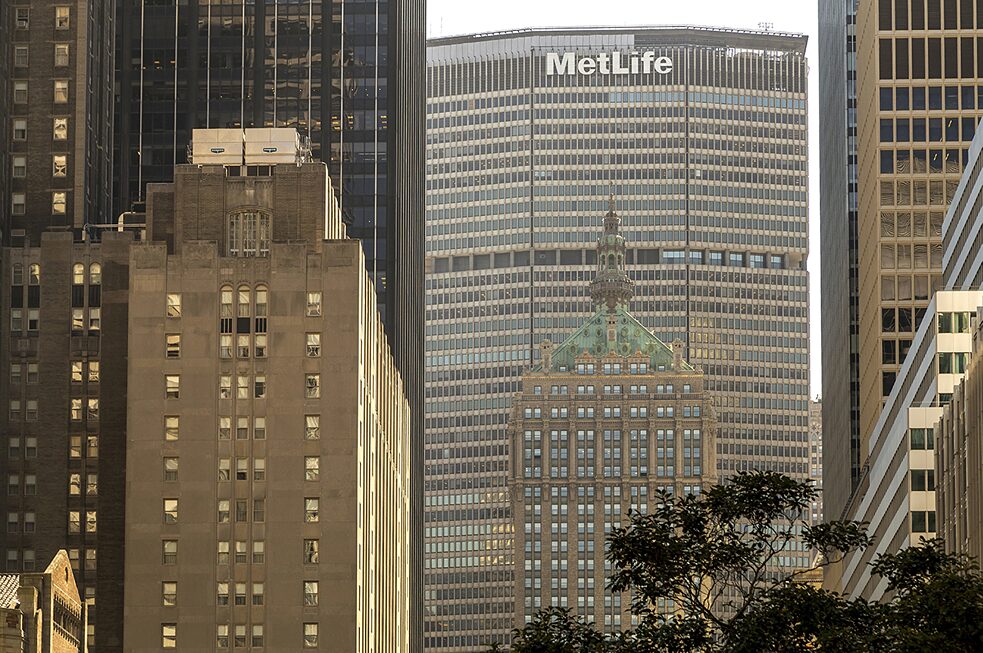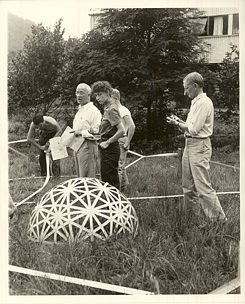Bauhaus at Universities
A global legacy

The ideals of the Bauhaus School shaped more than just design and architecture around the world; they also transformed teaching. And while a university in Weimar, the birthplace of the Bauhaus, still follows the founders’ guiding principles, other institutions based on the same spirit have had to close.
By Wolfgang Mulke
In the Weimar Bauhaus University quad, students are chatting and basking in the last warm autumn rays as Hagen Höllering arrives at work. The trained architect is a research assistant at the Institute of Representation Methodology. The university still follows the tried-and-true Bauhaus traditions, the design school that redefined the principles of art and architecture in the 1920s. "Today there is still a pressing need for a view of the world that is as broad and interdisciplinary as possible and we are still searching for appropriate responses to what we have seen in art, architecture, urbanistics and the media," Höllering, himself a Weimar University alum, says. What has survived throughout the years, he adds, is the spirit of the Bauhaus rather than the concrete issues the first generation set out to tackle. “We focus on dealing with the challenges of the present."
There are many real-life examples of what may initially sound like a rather nebulous generalization. Like Jens Richter, who is very enthusiastic about the cooperation between his PolyCare company and the Bauhaus University. The Thuringian entrepreneur worked with university experts to develop his firm’s flagship product, houses that are very easy to build using blocks made of desert sand. The building elements resemble giant Lego and make innovative use of ubiquitous materials widely considered unusable in construction.
“This allows us to quickly rebuild after natural disasters or improve the infrastructure in slums,” Richter explains. The Namibian government is interested in using the blocks to create 25,000 homes for the poor. Technically clever, aesthetically functional, inexpensive and with a positive social impact – Bauhaus founder and architect Walter Gropius would surely have been just as enthusiastic about a house made of desert sand.
The four principles of learning
Appointed Bauhaus director in spring of 1919, Gropius founded his new school to promote these same values. He called for a return to basic shapes and colours, simplicity in replication, and the optimal use of space, material, time and money. Today these principles are practically universal in product development for everything from the smartphone to the modern office building.
 Forced to immigrate to the USA, Bauhaus founder Walter Gropius was responsible for the construction of the MetLife Building, the former Pan Am Building in Manhattan, New York.
| Photo: © picture alliance / Arcaid
According to art historian and educator Rainer Wick from the University of Wuppertal, the Bauhaus pioneered this streamlined approach. He has intensively studied the teaching methods used at the Bauhaus, and argues that "the Bauhaus founders provided key impulses." Bauhaus instruction was shaped by four basic principles. The first maxim was "start from scratch." In other words, shake off all the old academic ballast and start afresh. The second was "learning by doing" and "trial and error" the third. Bauhaus students honed their abilities and skills working on actual projects and not just in the classroom. The school sought to eliminate the distinction between craftsmanship and academic education, which served as the fourth and final dictum, Wick explains. An essential element of the Bauhaus philosophy involved a holistic view of mankind, in which cognitive, affective and motor skills were all granted equal importance.
Forced to immigrate to the USA, Bauhaus founder Walter Gropius was responsible for the construction of the MetLife Building, the former Pan Am Building in Manhattan, New York.
| Photo: © picture alliance / Arcaid
According to art historian and educator Rainer Wick from the University of Wuppertal, the Bauhaus pioneered this streamlined approach. He has intensively studied the teaching methods used at the Bauhaus, and argues that "the Bauhaus founders provided key impulses." Bauhaus instruction was shaped by four basic principles. The first maxim was "start from scratch." In other words, shake off all the old academic ballast and start afresh. The second was "learning by doing" and "trial and error" the third. Bauhaus students honed their abilities and skills working on actual projects and not just in the classroom. The school sought to eliminate the distinction between craftsmanship and academic education, which served as the fourth and final dictum, Wick explains. An essential element of the Bauhaus philosophy involved a holistic view of mankind, in which cognitive, affective and motor skills were all granted equal importance.
Over the decades, a number of universities have based their curriculum on Bauhaus principles, though not all have survived the test of time. As early as 1953, former Bauhaus student Max Bill worked with other designers and artists to found the Hochschule für Gestaltung (University of Design, HfG) in Ulm, which attracted students from all over the world. The school ended up closing its doors for financial reasons in 1968. In 1970, the Hochschule für Gestaltung (University of Design) in Offenbach am Main, among others, adopted most of the HfG Ulm’s teaching concept.
The North American heirs
According to Wick, the resounding success of the Bauhaus can also be traced back to the school’s instructors: “Gropius managed to surround himself with the most prominent artists of the time.” Then when National Socialist persecution forced many Bauhaus masters and artists into exile, the Bauhaus teaching principles began to spread worldwide. Emigration transported the teachings to Sweden, South America and above all to the USA. Gropius left the Bauhaus in 1928, immigrating first to Great Britain in 1934 and then to the USA. Together with other architects, he spearheaded the construction of the MetLife Building, formerly the Pan Am Building, in New York’s Manhattan borough. Hungarian László Moholy-Nagy, one of the most important photographers and typographers at the Bauhaus, left Germany for North America the same year. In 1937 he became the founding director of the New Bauhaus Graduate School in Chicago, today the Institute of Design at the Illinois Institute of Technology.
 A former Bauhaus master at Black Mountain College: Josef Albers, on the right.
| Photo: © State Archives of North Carolina Raleigh, NC
The artists’ collective at Black Mountain College was one of the strongest perpetuators of the Weimar legacy in the USA. In 1933, artist Josef Albers moved from the Bauhaus to the college in North Carolina and other artists, musicians and academics soon followed his lead. The college gave instructors almost complete freedom in designing their lessons, which focused on methods rather than theory. By the 1940s, the school was a leading interdisciplinary college primarily in the arts, but with programmes in economics and physics as well. Bauhaus masters like Gropius, musicians like John Cage, and mathematicians such as Max Dehn taught at the institute, where Albert Einstein was also a guest lecturer. The school was forced to close in 1957, however, when some staff members were suspected of being communists during the Cold War, driving donors away.
A former Bauhaus master at Black Mountain College: Josef Albers, on the right.
| Photo: © State Archives of North Carolina Raleigh, NC
The artists’ collective at Black Mountain College was one of the strongest perpetuators of the Weimar legacy in the USA. In 1933, artist Josef Albers moved from the Bauhaus to the college in North Carolina and other artists, musicians and academics soon followed his lead. The college gave instructors almost complete freedom in designing their lessons, which focused on methods rather than theory. By the 1940s, the school was a leading interdisciplinary college primarily in the arts, but with programmes in economics and physics as well. Bauhaus masters like Gropius, musicians like John Cage, and mathematicians such as Max Dehn taught at the institute, where Albert Einstein was also a guest lecturer. The school was forced to close in 1957, however, when some staff members were suspected of being communists during the Cold War, driving donors away.
“The Bauhaus tradition teaches courage and responsibility”
An interview with Prof. Winfried Speitkamp, President of the Bauhaus-Universität Weimar.
Professor Speitkamp, how is your university different from other universities?
We are the only university in Germany named for an idea and style of design. We take that very seriously, not in the sense of simply preserving tradition though. Instead we focus on revisiting and reframing the questions associated with the Bauhaus, such as how to link technology, science and design today, and how to create an environment worth living in. We also explore whether new challenges, such as artificial intelligence, might require new responses.
Are there other universities – either in Germany or abroad – that still feel a sense of loyalty to the Bauhaus tradition or that were founded on this same tradition?
Absolutely, there are plenty of art schools including our international partners like the School of the Art Institute of Chicago and the Pratt Institute in New York that intensively explore the Bauhaus tradition along with other schools of design. The myriad of different ways the Bauhaus legacy has been adopted and interpreted keeps it so interesting.
What specific findings from the Bauhaus founders have made their way into teaching today?
The way we teach, the content and the methods, have moved on. But the idea of bringing technology, craftsmanship, science and design together as a unified concept remains fascinating and timely in education. Like many of the ideas from the great reform era around 1900 in which the Bauhaus has its roots: the beginnings of the youth movement, educational reforms, a return to natural medicine, vegetarianism, the green city and many other innovative reforms are still in effect today, even though many of us may not be aware of it.
What role can the Bauhaus tradition play in today’s ever-changing world, and where do you see innovative and revolutionary developments taking place?
The Bauhaus tradition teaches courage and responsibility for designing the modern world. This is a point of interface in a rapidly changing world. The Bauhaus did not call for a return to an idealised past, like the Heimatschutzbewegung (which translates as the movement for the protection of home) and historicism. It sought to rethink the modern in the modern age, open up new possibilities. And that is exactly what we strive for today: we try to figure out how we can steer the conditions under which change takes place in the modern era so that we ensure a liveable environment and a cohesive society. This is where the Bauhaus University can serve as a space for unconventional ideas and pioneering solutions.
Comments
Comment